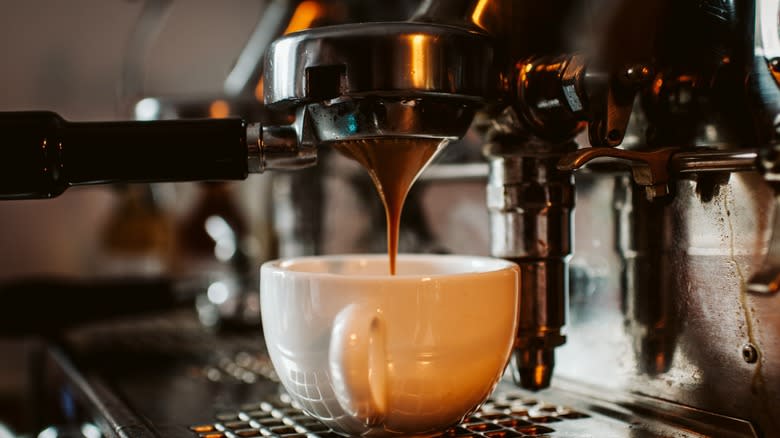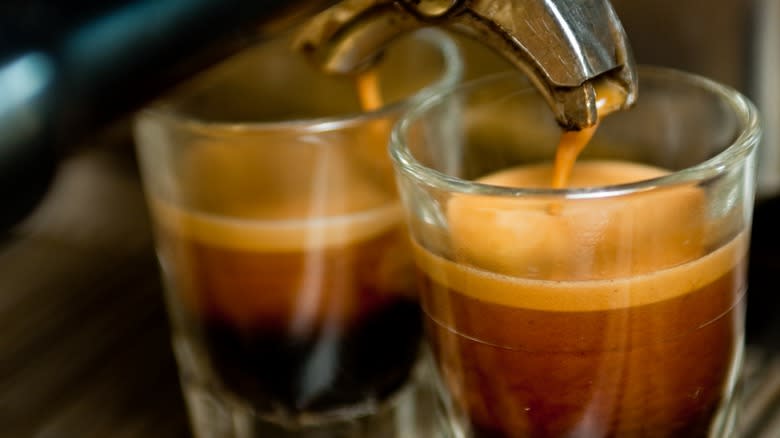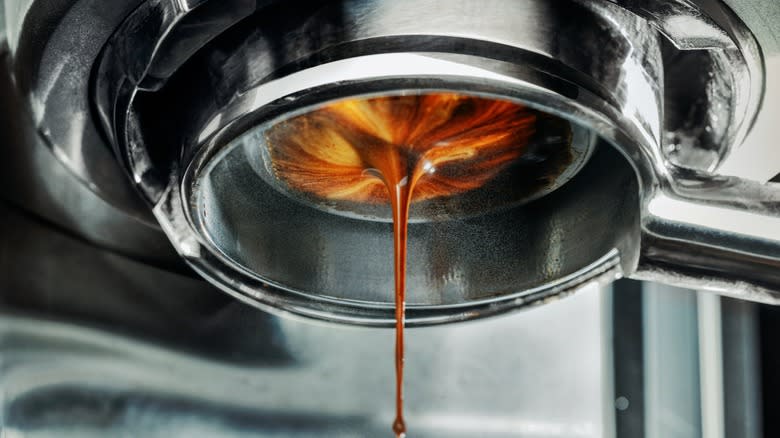The Difference Between Lungo And Ristretto Is In How Espresso Is Pulled

Learning the ins and outs of espresso-making is like becoming fluent in another language. Just because you've made coffee in a machine at home doesn't mean you know your way around an espresso machine. These complex devices work by firmly pressing water through a puck of finely ground coffee.
In the coffee world, the idea that you have to walk before you can run certainly applies. Pulling a basic shot is complicated in itself, so changing up the formula can really throw people for a loop. When it comes to understanding the difference between lungo and ristretto shots, you'll need to achieve total mastery.
Several factors influence the type of espresso shot you pull: the size of the grind, the amount of grounds, the amount of time the water passes through the grounds, and the output of water. If your grind is too small, the water will take too long to pass through, and the shot will be too strong. Alternatively, If your grind is too coarse, the water won't spend enough time passing through, and the shot will be watery. For a perfect shot, the water needs to spend 25-30 seconds interacting with the grounds.
Ristretto and lungo shots turn these rules on their heads while still achieving a palatable result. Learn the differences between them to impress the coffee aficionados in your life.
Read more: How To Get More Flavor From Your Coffee Pods & Other Keurig Hacks
Lungo

Next time you're at a cafe or making espresso in your kitchen, you might want to sample a lungo shot. Espresso has a reputation for being strong and concentrated and sometimes a little bitter. A lungo shot breaks that mold.
The word lungo means "long," and that is exactly what it is. It's an espresso shot, but the output of water is greater because you pull it for a longer amount of time. Instead of ending up with one ounce of espresso in your cup, your pull will yield between one and a half and two ounces of espresso. To do this, you grind your coffee beans slightly coarser and use about 75% more water than you would for a regular shot.
Because lungo shots contain more water, they are less concentrated than normal shots. However, the water spends more time than average passing through the grounds, giving it a deep, flavorful extraction that is often smoother than other shots. Light roast coffees tend to lend themselves to lungo shots because you can detect all of the delicate flavors in the coffee more distinctly.
Ristretto

The Italian meaning of the word ristretto is "shortened," or "limited." This definition accurately reflects the type of espresso shot that it refers to. The difference between espresso and ristretto is how it's brewed. Ristretto shots are essentially the opposite of lungo shots. If lungo shots utilize the same amount of coffee grounds as regular shots with more water, then ristretto shots will take the same amount of coffee grounds with less water.
The higher grounds to water ratio in a ristretto shot means these tiny mouthfuls of espresso pack a powerfully caffeinated punch. Their flavor is just as intense as their caffeine level. That's because the brief time the water spends mingling with the grounds pulls out only the strongest, most prominent flavors. Therefore, both dark and light roast coffees make good options for ristretto shots. These short shots originated in World War II, when cafes had to make due with limited stock by making shorter, more concentrated shots, but they're still popular in cafes today.
Read the original article on Mashed.

